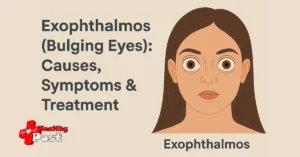
What is esotropia?
Babies over four months old with esotropia should see an ophthalmologist promptly. —American Society of Pediatric Ophthalmology and Strabismus
What is esotropia?
Esotropia is an inward deviation of one or both eyes.
The esotropia may be intermittent or constant and may occur with near vision, distance vision, or both.
Esotropia can be always in one eye or can alternate between the two. It can occur at any age. It is the opposite of exotropia (when the eye tilts outward).
Can esotropia be “normal”?
Esotropia in infants often resolves on its own before 20 weeks of gestation, especially if the malalignment is intermittent and the degree of strabismus is minimal.
However, any persistent esotropia at any age should be evaluated promptly by a pediatric ophthalmologist. Esotropia that develops after the age of four months (either constant or intermittent) should also be evaluated promptly.
What are the different types of esotropia ?
Esotropia can be classified by age of onset (congenital/infantile or acquired); by frequency (intermittent or constant); or by whether it is correctable with glasses (accommodative or nonaccommodative). For more information, see Infantile Esotropia and Accommodative Esotropia .
Esotropia can also develop secondary to other conditions. Poor vision can cause one eye to turn inward. Various neurological conditions (hydrocephalus, stroke, etc.) can cause esotropia. Certain medical conditions can also cause esotropia ( thyroid eye disease , Duane syndrome , etc.).
What problems can esotropia cause?
The effect of esotropia on the visual system depends on the frequency and severity of the eye deviation and the age of the patient.
Esotropia affects the ability of the two eyes to work together. Newly developed esotropia in older children and adults often causes double vision (double images) and/or a reduced visual field in both eyes . In children, it can lead to vision loss in the deviated eye ( amblyopia ), as well as loss of stereopsis (3D vision) and binocularity (using both eyes simultaneously).
Does esotropia run in families?
Strabismus, or misaligned eyes, can run in families.
However, affected family members do not necessarily have the same type or severity of strabismus. A family history of strabismus itself is a good reason to see the child’s ophthalmologist for an eye examination.
What conditions increase the risk of esotropia?
Prematurity, a positive family history, and various neurological and genetic abnormalities increase the risk of eye misalignment. There are also some systemic disorders that can cause eye misalignment (hyperthyroidism, diabetes, etc.).
Some children may appear to have strabismus, but are their eyes actually aligned normally?
Pseudostrabismus is a condition that resembles strabismus but is not a true misalignment of the eyes. It is usually caused by the shape of the eyelids and/or a wide nasal bridge. Any child suspected of having misaligned eyes should be fully examined by a pediatric ophthalmologist. Some children may have both pseudostrabismus and true misalignment. Therefore, pseudostrabismus alone does not rule out the possibility of true strabismus.
How do pediatric ophthalmologists evaluate children with suspected esotropia?
After taking a careful medical history, your doctor will assess your vision using an examination that is appropriate for your age.
The key to this measurement is to determine if the visual acuity of both eyes is equal, or if one eye is better than the other. If the eye is misaligned, a measurement is performed to assess the general health of the eye and the refractive state of the eye (i.e., farsightedness, nearsightedness, astigmatism).
What are the treatments for esotropia?
There are many factors to consider when treating it. The main principles are:
█ Restore the correct position of the eye
Maximize binocular vision
█ Relieve double vision
█ Treatment of associated amblyopia
Treatments to correct eye alignment include glasses (sometimes prisms or bifocals), strabismus surgery (extraocular muscle surgery), and, less commonly, botulinum toxin injections.


One thought on “What is esotropia?”